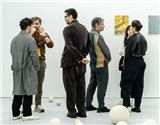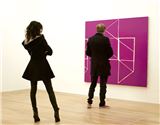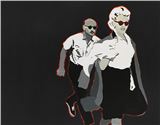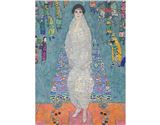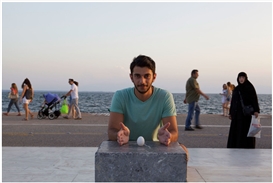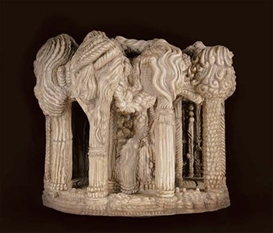In many ways, the exhibition catalogs of the two biennales that opened in Korea last month served as a telling encapsulation of their respective places in the contemporary art world.
The 7th Gwangju Biennale, held under the artistic direction of Okwui Enwezor, the New York-based curator, put together a thinly condensed guide covering its programs and artists’ descriptions in 110 pages of gloss-coated prints. The 5th Busan Biennale, on the other hand, incurred journalists’ ridicule as they handed out “a sack” of three hardcover books, each several hundred pages long, to the press on the show’s opening day on 6 September. Some journalists questioned the hidden meaning behind Expenditure, Busan’s theme this year, and mischievously raised the question whether the theme had anything to do with the wastefulness of the catalogs they had to lug along with them. The impressions of each biennale gathered solely from their respective publications were not at all exaggerated: Gwangju was ever practical and frank; Busan was inviting yet clearly out of date. Even as the days wore on in the two biennales, signs subverting this pattern did not emerge. They conveyed clear differences in their approaches and context - one had no theme, the other chose an overdone theme.
In a rare attempt within a biennale context, Gwangju, held under the title Annual Report: A Year in Exhibitions, announced that the biennale would have no theme this year. In Busan, the French philosopher Georges Bataille’s (1897-1962) notion of excess and the economy of expenditure played a main buzzword in the overall show and its references to contemporary discourses including consumption, sex and death. “In a way, Gwangju challenged the existence of a contemporary art biennale by frankly acknowledging and making it public that it really doesn’t matter how to look at an artwork,” says Ban Ejung, the Korean art critic. “It was one of the best installed shows in years, and perhaps this was only possible, because the show could fully concentrate on the content and quality of the artworks without being bounded a curatorial theme. In Busan, you saw the exact opposite; its theme limited possibilities of the artworks.”
Historically, the biennales of the two cities - still largely affected by the political regionalism that divides each other – have begun with different ambitions and aims funded by their local governments. Gwangju Biennale started off in 1995 with a strong connection to the militant spirit demonstrated by local minjung artists (people’s artists), who were heavily influenced by a democratic uprising that took place in the area in May 1980. Busan, a beach-town on the country’s southeastern portion, launched its own version of an international biennale later in 2000. The Busan show is an expanded form of its previous Sea Art Festival, an annual show held in the city’s beachfronts every summer for the resort visitors.
Until this year, Gwangju had pronounced political overtones with strong engagement with local artists inheriting the area’s democratic spirit. This approach took a slight side-turn this year as the biennale foundation hired its first non-Korean artistic director, allowing more room to adopt broader interpretations of global art and issues. Of the show’s three main components this year – “Position Papers,” “Insertions” and “On the Road” - the one that attracted the most attention and controversy was the last, a selection of works from past exhibitions around the world.
One of the most impressive installations was
Hans Haacke’s Wide White Flow, a stretch of white fabric fluttering in wind created by electric fans installed below. But the artist completely recontextualized this work by installing black and white photographs of crowds who surrounded artworks at Documenta II held in Kassel in 1959: the scene captures the German public having their first encounter of contemporary art after years of the state’s cultural production and exhibition being controlled by the Nazi regime.
Urban spaces were deconstructed and reexamined in different contexts. A significant portion of space was devoted at the Gwangju Museum of Art to Gordon Matta-Clark, a late American artist who explored notions of psychological rupture by revealing the hinges beneath the walls and concrete structures of buildings at abandoned sites. David Adjaye, a London-based architect, presents photographic series on the construction of housing, streets and neighborhoods in urban African cities. Park Jooyeon has measured wind migration, temperature changes and sea level pressure of the last summer in Istanbul, and turned it into a series of musical chords. The sound accompanies her 16 millimeter film, Passerby: Between Azure, Bisque and Teal, the artist’s travelogue that captures random moments of the city from her stay.
Display sites were expanded for this year’s Gwangju biennale. One of the most playful uses of space was at Daein Traditional Market, where artists worked their way into various spots in the local outdoor market, and integrated their works into the space. An intriguing selection of drawing works came from a team of Korean artists who rented a three-story attic made up of tiny cells – which was deliberately designed and lighted to create an image of brothels – connected through steep ladders, and used it as their open studios. In Paprika Project, the Korean artist Kiyoung Peik served as a paprika vendor, dipping into color alternations and genetically modified products from the perspective of visual study.
It was somewhat more obvious in Busan that the exhibition was organized with a stronger emphasis on popular appeal. Standing out from the main exhibit at the Busan Museum of Modern Art was Lee Yong-baek’s Pieta, a giant 4 meters statue of Mary in white cast carrying a pink Jesus in her arms. But perhaps works that had deeper resonances came from works that were part of the Sea Art Festival. One of the most amusing and engaging video installations was a collaborative work between Finish and German artists Tellervo Kalleinen and Oliver Kochta-Kalleinen. In a unique community art project called Complaints Choir, the artists mobilized a citizen choir in various cities around the world including Chicago, Hamburg and Singapore, and encouraged them to sing aloud the list of complaints about their cities.
Compared to playful works like this in the indoor exhibition, the festival’s main installations at the beachfronts were shamelessly disorganized. The day after the opening, artist Yang Ju-hye draped her work with red tapes tied to wooden sticks on Gwanganli Beach after a flock of children climbed on top of the artist’s work - a shape of barcode dug on heaps of sand -- and literally scrapped off the numbers as they ran around the installation site.
Overall, responses to the two biennales were wildly mixed. Gwangju gained unparalleled praise from a majority of foreign press who thought the show was one of the best-installed biennales out of all the venues in countries they had visited this season including Yokohama and Singapore. On the other hand, some local critics have pointed out that the direction introduced at this year’s Gwangju Biennale – be it the selection of artists, the curatorial methodologies or the works that evoked deeper dialog on race and post-colonialism - were largely unfamiliar to the tastes of the mainstream Korean art scene.
Others cited Busan and their failed attempt to create a grand discourse to support Gwangju’s choice to remain a theme-less exhibition. By giving up a theme, many believed that the show proposed a healthy vision of a contemporary art biennale, questioning what an exhibit can and cannot do in one show.


 ARTISTS
ARTISTS
